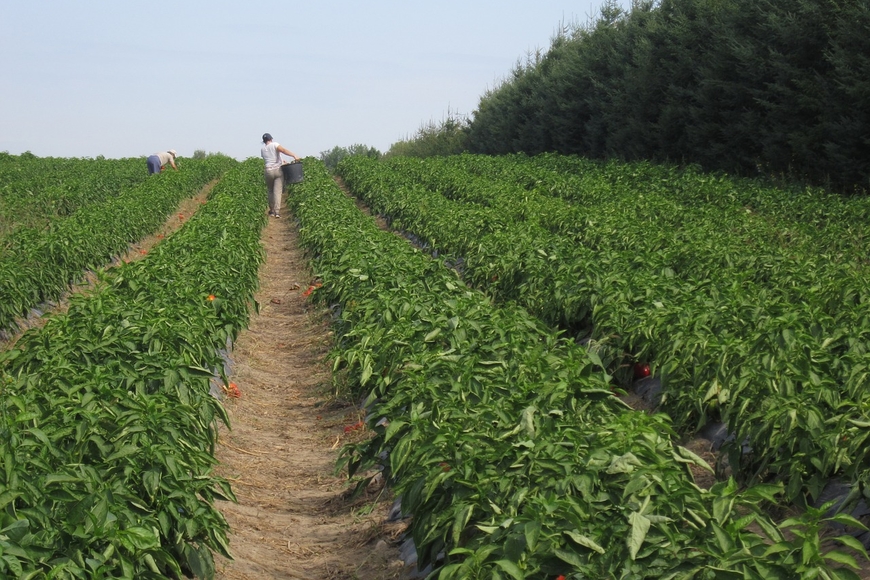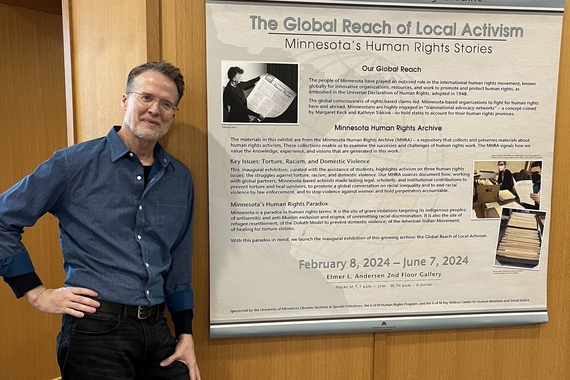Student Voices: Protect the Workers that Feed America
December 10th-17th is National Human Rights Week in the United States focused on highlighting human rights issues. To honor National Human Rights Week, we will be posting a series of articles focusing on both national and international human rights issues happening in our world today.
When you hear about “human trafficking” do you often think about sexual predators? When I began working in anti-human trafficking awareness, I saw it as kidnappings into the underground sex trade just like in movies such as Taken. I began to understand the intricacies of trafficking when I started working with organizations that help trafficking survivors. It turns out that a lot of human trafficking is for forced labor. And a lot of that happens on US farms.
2020 marked the 20th anniversary of the Trafficking Victims Protection Act in the United States, a staple piece of legislation setting the framework to combat human trafficking. However, this legislation, as well as subsequent state and federal human trafficking legislation, have left out crucial protections for rural farm workers. Farm workers throughout the U.S. serve a critical role in the American food supply and the U.S. economy, but they face enormous threats and neglect.
The lack of monitoring and oversight on suppliers and corporations in the agriculture industry make farm work in rural communities one of the largest hot spots for human trafficking in the entire country, with migrant workers on America’s farms being extremely vulnerable. As of 2020, there is estimated to be over 3 million migrant and seasonal farmworkers in the United States alone. In fact, the largest human trafficking ring to be discovered within the United States was formulated by staff of the recruiting giant Global Horizons, which held 600 migrant Thai workers against their will in farms across 13 U.S. states.
Survivors of trafficking within the agriculture sector commonly work under temporary visas such as the H2A and H2B visa, or without U.S. immigration status. In the most recent case brought to the United States Diplomatic Security Service, a man harboured and abused numerous H2B visa workers on an isolated farm in rural Texas. The survivors in this case worked up to 80 hours per week and the U.S. Department of Labor calculated over $3 million in back wages due to victims.
Migrant agriculture based human trafficking, such as in the case above, goes heavily underreported due to fear of deportation. In many cases, traffickers withhold passports and visas from migrant workers, allowing hazardous conditions, malnourishment and in some instances sexual violence and torture to persist. The average life expectancy for a victim of human trafficking is estimated at only 7 years after they have entered trafficking.
Another recent case in the state of Minnesota found three individuals guilty of abusing 76 workers on a rural farm for personal gain. Trafficking survivors from the Dominican Republic were physically and psychologically threatened including by hired hit men who threatened violence if they complied with federal investigators.
Additionally, the rural setting and potential language barriers make access to information on human trafficking prevention and reporting scarce. In a study by the National Center on Farmworker Health, 62% of migrant and seasonal farmworkers said that they speak English “very little” or “not at all”. COVID-19 has expanded these risks because NGO based translators and in-personal monitoring has weakened.
Both corporations and the U.S. government must be held responsible for producing ethical goods to feed America. Some of the strongest steps that must be taken in order to protect America’s migrant farm workers include creating ways in which corporations can be more transparent with production, developing human trafficking education curriculums in rural communities, and expanding oversight on treatment of farmworkers.
An extraordinary example of this in practice is the Fair Food Program developed by the Coalition of Immokalee Workers in Immokalee, Florida. The organization’s approach to enforcing compliance completely reformed the tomato farming industry in Florida, effectively eliminating forced labor practices in the state industry.
Their multifaceted approach to social responsibility includes legally binding agreements with food buyers, a fair food premium price on migrant produced goods, worker-to-worker education (in English, Spanish and Creole), and easily accessible ways for workers to report complaints. It is a protocol which the United Nations Special Rapporteur on Human Trafficking, Maria Grazia Giammarinaro, has called “an international benchmark” in the fight against modern day slavery.
While dynamic human trafficking prevention and protection efforts such as the Fair Foods Program can easily be set in place across the United States, less than twenty businesses have committed to joining in half of the U.S. states.
State governments can act and invest in policies which incorporate similar techniques into legislation, however have not done so thus far. For example, while 38 states have incorporated private and public sector human trafficking training, there is currently no training legislation focusing on the unique situation of migrant farmworker trafficking. California is the only state which requires all contractors to certify that no work was provided through forced labor or exploitation.
We must place the issue of forced labor in agriculture at the forefront of our advocacy on trafficking in the United States. While you enjoy the food at your table you also need to take action to protect the rights of workers who made your meal possible.
You can find out more and get involved with the Fair Food Program here.



